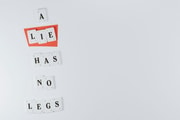
If you've been feeling unusually tired, emotional, or just plain out of sorts this week, you're not alone. Across Australia, people are taking to social media to share their collective exhaustion, with many social media users pointing fingers at the full moon.
But while celestial bodies make for compelling scapegoats, the real reason for our nationwide fatigue is far more mundane—and scientifically proven.
The truth is, we're all suffering from the aftermath of daylight saving time, which began on Sunday, October 5, 2025, when clocks jumped forward from 2am to 3am. That lost hour of sleep might seem insignificant, but its effects ripple through our bodies for days, sometimes weeks, afterward.
The Science Behind Post-Daylight Saving Exhaustion
When daylight saving kicks in, we don't just lose an hour of sleep—we disrupt our entire circadian rhythm, the internal body clock that regulates when we feel alert and when we feel tired. Dr. Sarah Chen, a sleep specialist at the Sleep Health Foundation, explains that this disruption affects everyone, but seniors often feel it most acutely.
'Our circadian rhythms become less flexible as we age,' Dr. Chen notes. 'While a 25-year-old might bounce back from the time change in a few days, someone over 60 might take a week or more to fully adjust.'
'It's like forcing your body into jet lag without the benefit of actually going anywhere exciting.'
This year's transition has been particularly challenging. The October shift, where we 'spring forward,' is notoriously harder on our bodies than the April shift when we 'fall back' and gain an hour. The Sleep Health Foundation specifically warns that losing an hour in October creates more significant disruption to our sleep patterns.
Why We Blame the Moon (When It's Really the Clock)
It's fascinating how quickly we turn to mystical explanations when we're feeling off. This week, TikTok has been flooded with videos attributing widespread fatigue to the full moon, with users sharing their exhaustion and emotional volatility.
Professor Michael Thompson, a psychologist specialising in health beliefs at Melbourne University, says this tendency to blame the moon is deeply rooted in human psychology. 'When we're experiencing something uncomfortable that we can't immediately explain, we look for patterns,' he explains. 'The moon is visible, mysterious, and has been associated with human behaviour in folklore for centuries.'
Common Daylight Saving Symptoms
Persistent fatigue despite adequate sleep time
Difficulty concentrating or 'brain fog'
Increased irritability or emotional sensitivity
Changes in appetite or meal timing
Headaches or general body aches
But while lunar cycles might affect ocean tides, scientific studies have consistently failed to find any significant connection between moon phases and human sleep patterns or mood. What we're experiencing this week has nothing to do with celestial bodies and everything to do with government-mandated time changes.
The Particular Challenge for Seniors
For older Australians, the daylight saving transition poses unique challenges. Research shows that people over 60 take longer to adjust to time changes, and the effects can be more pronounced.
Age-related changes in our circadian rhythms mean that seniors often experience:
- Earlier natural wake times that conflict with the new schedule
- Reduced production of melatonin, the sleep hormone
- More fragmented sleep patterns
- Greater sensitivity to light exposure changes
'Many of my older patients report feeling completely thrown off for at least a week after the clocks change,' says Dr. Rebecca Martinez, a geriatric medicine specialist in Sydney. 'They might find themselves wide awake at 4am—which feels like 5am to their body—unable to get back to sleep.'
Key Statistics on Daylight Saving Impact
- 68 per cent of Australians report sleep disruption in the week following daylight saving
- People over 60 are 40 per cent more likely to experience prolonged adjustment periods
- Heart attack risks increase by 25 per cent on the Monday following the spring transition
- Car accidents increase by 8 per cent in the week after clocks spring forward
The Ripple Effects on Daily Life
The impact of daylight saving goes far beyond just feeling tired. The sudden shift affects multiple aspects of our daily routines, creating a cascade of disruptions that compound our exhaustion.
Meal timing confusion is a common but often overlooked consequence. Our bodies expect food at certain times based on our internal clocks, not what the wall clock says. This week, many people have reported feeling hungry at odd times or experiencing digestive issues as their bodies struggle to adjust to the new schedule.
Example Scenario
- Margaret, 72, from Brisbane, describes her week: 'I've been waking up at 4am thinking it's 5am, then I'm starving by 10am because my body thinks it's 11am. By 3pm, I'm ready for bed. It's like my whole day is off-kilter.'
- John, 68, from Melbourne, shares: 'I take my medications at specific times, and this week has been a nightmare trying to figure out when to take them. Do I stick to the old schedule or adjust immediately?'
Why This Year Feels Particularly Hard
Several factors have converged to make this year's daylight saving transition particularly challenging. October 2025 has seen unusual weather patterns across much of Australia, with unseasonably warm days followed by cool nights. This temperature fluctuation adds another layer of disruption to our already confused circadian rhythms.
Additionally, many Australians are still recovering from a particularly harsh flu season, which peaked in late September. Dr. Chen notes, 'When your immune system is already compromised, any disruption to sleep patterns can feel exponentially worse.'
Did you know?
Did you know?
The concept of daylight saving was first proposed by Benjamin Franklin in 1784 as a way to save candles. However, it wasn't widely adopted until World War I, when countries implemented it to save fuel for the war effort. Today, the energy-saving benefits are hotly debated, with many arguing the health costs outweigh any economic advantages.
Practical Strategies for Surviving the Transition
While we can't turn back the clocks (literally), there are evidence-based strategies to help minimize the impact of daylight saving on your body and mind.[/p>
1. Gradual Light Exposure Adjustment
Light is the primary signal that sets our circadian rhythms. Dr. Martinez recommends getting bright light exposure first thing in the morning—even if it feels painfully early. 'Open your curtains immediately upon waking, or better yet, step outside for a few minutes. This helps reset your internal clock to the new time.'
2. Maintain Consistent Meal Times
Resist the urge to eat based on how hungry you feel. Instead, stick to regular meal times according to the clock. This helps train your body to adjust to the new schedule more quickly.
3. Avoid the Nap Trap
While that afternoon nap might feel necessary, it can actually prolong your adjustment period. If you must nap, limit it to 20 minutes before 3pm.
Quick Recovery Tips for Seniors
Take a short morning walk to get natural light exposure
Keep bedroom temperature cool (around 18-20°C)
Avoid screens for at least an hour before bed
Consider melatonin supplements (consult your doctor first)
Maintain social activities even if you feel tired
4. Strategic Caffeine Use
While it's tempting to increase coffee consumption when tired, this can backfire. Limit caffeine to morning hours only, and avoid it after 2pm to prevent further sleep disruption.[/p>
5. Exercise Timing Matters
Regular exercise helps regulate circadian rhythms, but timing is crucial. Morning or early afternoon exercise can help you adjust faster, while evening exercise might keep you awake longer.
When to Seek Help
For most people, the effects of daylight saving are annoying but temporary. However, some individuals may experience more severe or prolonged symptoms that warrant medical attention.
Dr. Chen advises seeing your doctor if you experience:
- Persistent insomnia lasting more than two weeks
- Severe mood changes or depression
- Significant confusion about medication timing
- Increased frequency of headaches or migraines
- Worsening of existing health conditions
This is particularly important for seniors who may be managing multiple health conditions or taking medications where timing is critical.[/p>
The Ongoing Debate: Is Daylight Saving Worth It?
As Australians collectively struggle through another week of post-daylight saving exhaustion, the debate about whether the practice should continue intensifies. While Queensland, Western Australia, and the Northern Territory have opted out of daylight saving, the southeastern states persist with the twice-yearly time change.[/p>
Recent studies have increasingly questioned the benefits of daylight saving. A 2023 Australian National University study found that any energy savings from daylight saving were negligible, while the health costs—including increased rates of heart attacks, strokes, and accidents—were significant.[/p>
'We're essentially conducting a massive experiment on the population twice a year, and the evidence suggests the costs outweigh the benefits.'
Several health organizations, including the Sleep Health Foundation and the Australian Medical Association, have called for a review of daylight saving practices, particularly given the ageing population and increased understanding of circadian rhythm importance.[/p>
Looking Ahead: How Long Until You Feel Normal?
The good news is that this exhaustion is temporary. Most people will start feeling more like themselves within 7-10 days of the time change. For seniors, full adjustment might take up to two weeks, but implementing the strategies mentioned above can significantly shorten this period.
Dr. Martinez offers this reassurance: 'Your body is remarkably adaptable. While this week might feel challenging, remember that you've successfully navigated dozens of these transitions before. Be patient with yourself, maintain healthy habits, and you'll be back to normal soon.'[/p>
Timeline for Recovery
- Days 1-3: Peak exhaustion and confusion
- Days 4-7: Gradual improvement in energy levels
- Days 8-14: Most people fully adjusted
- Beyond 14 days: Consider seeking medical advice if still struggling
Silver Linings in the Daylight
While we're all feeling the negative effects this week, it's worth remembering why daylight saving was maintained in these states. The extra hour of evening daylight does offer benefits, particularly for mental health and social connectivity.[/p>
Studies show that having more daylight in the evening hours can:[/p>
- Reduce symptoms of seasonal affective disorder
- Increase opportunities for outdoor exercise
- Enhance social connections through evening activities
- Improve vitamin D production
- Boost overall mood (once we've adjusted)
Margaret Thompson, 75, from Adelaide, offers a positive perspective: 'Yes, this week has been tough, but I'm looking forward to evening walks with my grandchildren once I adjust. Last year, those extra light hours in the evening were wonderful for our family dinners in the garden.'
What This Means For You
So, if you're feeling exhausted, emotional, and out of sorts this week, you can stop blaming the moon. The real culprit is that lost hour from Sunday's daylight saving transition, and you're in excellent company with millions of other Australians experiencing the same struggle.
The key is to be patient with yourself, implement healthy adjustment strategies, and remember that this too shall pass. In a week or two, you'll be enjoying those longer evenings and wondering what all the fuss was about—at least until autumn rolls around and we do this dance all over again.
Have you been struggling with the daylight saving transition? Share your experiences and tips for coping in the comments below. And if this article helped explain why you're feeling so tired, share it with others who might be blaming the moon for their exhaustion!







